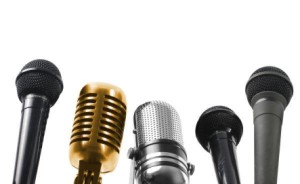 Article originally posted at http://www.fearlesspresentations.com/how-to-end-your-presentation-with-a-bang.
Article originally posted at http://www.fearlesspresentations.com/how-to-end-your-presentation-with-a-bang.
Have you ever heard a great speaker end an amazing talk with a lousy “Thank you,” or worse, “That’s it folks, any questions?” Such endings are anti-climactic. You went through all that effort to deliver a good presentation and that’s how you end it?
Shame.
To your audience, it’s like a great fairytale with a sad ending. A dud, a runner who had cramps a couple of steps before the finish line. So near, yet so far.
The Danger of Not Announcing an Imminent Close
Like I said in my last article, our brains are wired to look for structure in things. That’s why people get frustrated with cliffhangers in movies. Only in movies, there’s a sequel. In speeches and presentations, the end is the end.
Give a few hints a couple of slides or paragraphs before the ending. Make it clear that you’re about to wrap things up by saying, “So let me review what we’ve discussed”, “As I wrap up this presentation” or “In conclusion” or “As I conclude this speech, allow me to…”
Signaling the close politely prepares your audience for the ending. Plus, those who are starting to lose interest will start paying more attention. Ironically, announcing the ending also makes it more memorable.
But how do you make an ending memorable? If saying “Thank you” or “Any questions” is not advisable, what can you do?
Secrets to a Powerful Ending
Ask Questions
Questions simulate our brain’s neocortex or ‘new’ brain, the part of our brain that overrides instincts and old behaviors. When you pose a question, or hear a question from someone else, your brain automatically thinks about it. Sometimes, your brain will instinctively answer the question whether you like it or not.
That’s why people are drawn to thought-provoking questions. When ending your speech, don’t ask easy questions where the answer is an obvious “yes.” Ask open-ended questions, potentially sensitive questions and questions with no straight right or wrong answers. Get their wheels turning.
For instance, in a speech about GMOs, ask “Are foods with GMOs really that bad, or is it just propaganda?” In a speech for graduating students, ask, “What can you do to stand out, to contribute to society, now that most graduates find it a challenge to get hired?”
Challenge the Audience
Most speeches and presentations tell their audience that they can do something to affect the world they live in. Be it to save the environment, get a good job, improve company leadership or save more money. Whatever the case, such advice is useless if it’s not applied.
What’s the use if your audience forgets it, right? To prevent that and to inspire your audience, challenge them to do one specific thing from your speech.
If your speech is about finding a dream job and one of the points is to reach out to people in your network, dare your audience to connect with 3 people after the talk. It has to be specific and actionable, not just, “get a dream job” or “save Mother Nature.”
“One More Thing”
Steve Jobs was famous for concluding his keynotes with “One more thing…” then following it up with a surprising fact, feature or innovation.
Why is this effective? Because it leaves people talking.
Next time you’re about to give a speech try leaving out the most surprising part ‘til the end. Then channel your inner Steve Jobs.